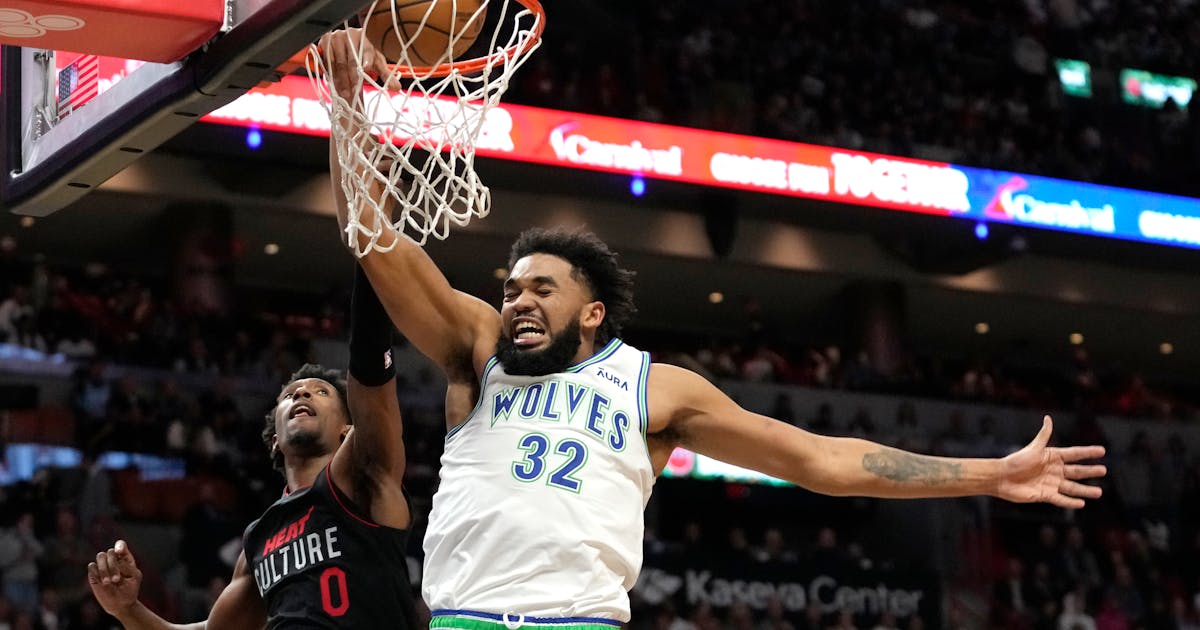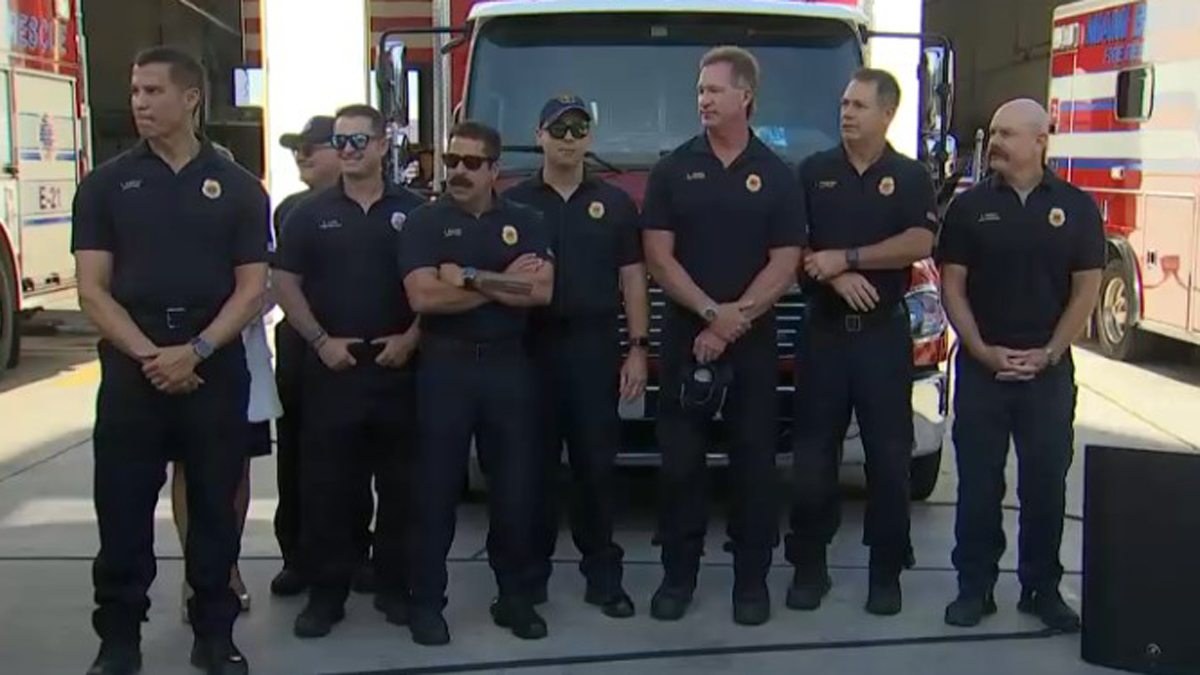F1’s presence in Miami persists during the fervent bustle of Dolphins game days
The Formula One pit lane at the Miami International Autodrome is ordinarily one of the busiest and highest-pressure areas on a race weekend.
In clear sight of the main grandstand on the other side of the track, teams work hard on their cars in the garages. During the race, they’ll service the cars at each pit stop in a little over two seconds, every tenth being decisive to their final race result.
But by mid-October, it is calm. Gone is the usual hubbub of activity. Officials in high-vis jackets guide cars arriving to and departing from Hard Rock Stadium, parking up on the same stretches of track where Max Verstappen and Sergio Pérez fought for victory in May. One official jokingly goes up to the side of a stationary car and mimics using a wheel gun, complete with whirring noises, to change a tire.
Fans will focus on a very different sporting spectacle today. The Miami Dolphins are back home against the Carolina Panthers, aiming to continue their electric start to the season. They’ll run out comfortable winners, 42-21.
But F1’s presence continues to be felt even on a Dolphins game day. After two years, the grand prix has quickly established itself as a core part of the Dolphins’ sporting portfolio, adding to Miami’s status as one of the major sporting centers of the United States.
“The Miami Dolphins is our core business, obviously, it’s why we exist and why we’re here,” explained Tom Garfinkel, CEO of the Miami Dolphins and managing partner of Miami Grand Prix.
“But the race is a very significant investment and a very significant business for us now.”
Maximizing the crossover
When the Miami organizers laid plans for their second race in 2023, they renewed their focus on the hospitality offering after teething troubles in year one. That led to the construction of a permanent 190,000-square-foot paddock complex and that allowed closer integration with other sporting events at the Hard Rock Stadium.
“The building was purpose-built for the Formula One race weekend,” Garfinkel explained. “But then the idea is how can we capitalize on having this asset the rest of the year? I try to think about things as very fan-centric, customer-centric. What’s an experience we can provide them?”
There are still lingering reminders of May’s race while walking around the pit lane. F1 logos and sponsorship stickers remain on the tarmac, as do the turquoise markings outlining track limits across the circuit. Driving on the ‘track’ while coming into the stadium has become a popular novelty among the staff and even some of the Dolphins players.
The pit signage also remains intact, denoting the garages for all 20 drivers. But now the garages are used for a very different purpose: pre-game hospitality and what Garfinkel calls “the ultimate tailgate experience.”
The inside of the garages have been overhauled since the race in May. The space allows room for food stations, bar areas, seating, and even a couple of F1 simulators. Mascots in Miami GP-themed race suits roam the paddock areas, and inside the Hard Rock Stadium, there are plenty of nods to F1 – pictures of drivers posing with Dolphins players are potted around the fan areas. The Hard Rock Stadium field housed the paddock for the first time this year. The crossover flows both ways.
Tyler Epp, the president of the Miami Grand Prix, told The Athletic it was a sign of the integration of F1 within the broader Dolphins organization. “I often get introduced as ‘This is Tyler, he works on Formula 1 for the Dolphins,’ and I welcome that,” he said. “I think that’s very much how we operate.
“We believe our place differentiates us from some of the other promoters, and it’s really driven around (Dolphins owner Stephen M. Ross) and Tom’s vision, around this sports entertainment business that’s built upon the diverse activities that our fans can receive.”
Miami hopes it can turn F1 fans into football fans and vice-versa. For the 2024 race, Epp said they’ve launched a new ticket package exclusively for Dolphins season ticket holders that is proving popular. It would allow fans to get together outside of the NFL season, sitting together in a designated grandstand section at Turn 18. “You will see a significant presence from Dolphins season ticket members at the Miami Grand Prix in May,” Epp said.
Garfinkel also thought closer ties between F1 and football fan bases could only benefit both sides. “The NFL is certainly growing internationally,” he said. “I think doing some co-promotion with Formula 1 is going to help that, and the NFL being certainly the most popular sport in the United States, as F1 is trying to grow in the United States, they can help each other.”
What 2024 looks like for the Miami GP
Once the Dolphins’ season ends, there’ll be little respite at the Hard Rock Stadium. It will host the Miami Open tennis tournament in April before a rapid turnaround in time for next year’s grand prix, scheduled for May 5.
As the race evolves into its third year, there’ll be some minor tweaks to the race weekend. F1 Academy will join the support bill, allowing more rubber to be laid down on the traditionally green track, and the race is set to start half an hour later at 4 p.m. ET.
Miami will also host the second of six F1 sprint races in 2024. Tweaks to the sprint weekend format, including the return of qualifying to its traditional Saturday afternoon slot, are set to be finalized next month.
“We’re always looking for ways to continue to differentiate our weekend from everybody else’s,” Epp said. “We think the way that the sprint could be orchestrated, it can actually create an environment that is beneficial for both the kind of purist fan, and also the new fan that tends to dominate the U.S. marketplace.”
Besides the weekend format, Miami isn’t planning any significant changes for year three. Garfinkel expected the team hospitality units to remain on the pitch inside the stadium after its popularity this year and thought there might be a slight increase in the ticket capacity from 90,000 to 95,000. “We may go a little higher, depending on how we see things,” he said.
The possibility of Miami becoming a night race in the future emerged in May after Garfinkel revealed there had been some discussions about the prospect. But he said there were “no plans to have one right now.” Such a shift would require consultation with locals in Miami Gardens and evaluating the practicalities – and popularity – of such a significant change.
“There’s obviously a cost involved, so what’s the cost-benefit?” Garfinkel said. “Is it something fans would really enjoy? And what would it be? Would it be Sunday night, would it be Saturday? You have to really think through all those things.”
One new element for Miami to contend with next year is the impact of the inaugural Las Vegas Grand Prix, which took place last month and, after a rough start, ended on a high with one of the most exciting races of the season.
A lot of the narrative in the lead-up to Las Vegas surrounded the ability of F1 to sustain three races in the United States moving forward and what impact the hype around Vegas would have for Miami and Austin.
Epp said that Miami’s ticket sales were “still in really good shape” for 2024 and that Vegas had been “a nice boost to the interest in the United States.”
“We have not seen a significant impact to our commercial efforts with Vegas,” Epp said. “In fact, in some ways, especially on the more luxury side, we’ve seen that business continue to bolster.
“All we can go off is the information that we receive, and until we see that information or the data starts to fall in a different way, all I can tell you is that the American consumer absolutely sees the differentiation between the three circuits, and the value amongst the three.”
(Lead image: Jeff Robinson/Icon Sportswire via Getty Images)



